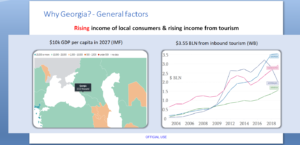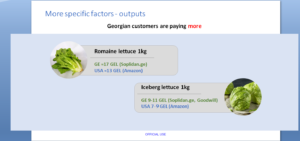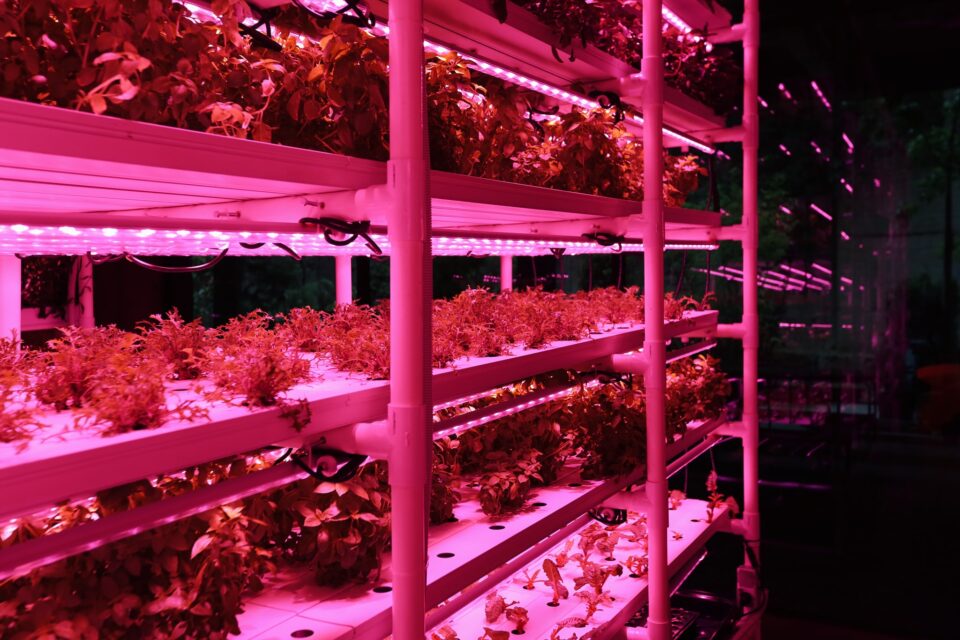In Georgia, vertical production is not very widespread yet, but judging by the current supply and demand, prices, as well as economic and financial forecasts of international organizations, vertical farms can find their niche in the Georgian market, said an international consultant of the Food and Agriculture Organization of the United Nations (FAO) Nikoloz Japaridze at the International Conference “HortiTech – the latest digital technologies for fruit and vegetable business – opportunities for Georgia” held in Tbilisi.

According to Nikoloz Japaridze, today there are only 6 vertical farms in Georgia, for the most part, they are quite small, up to 150 square meters, but the owners of each of them have either already increased or are planning to increase the area, and this is a good sign, indicating about the profitability of their business. A survey of existing farm owners in terms of production volumes and product prices showed that for most of them, the actual indicators are quite close to the planned ones.
Nikoloz Japaridze talked about the factors that determine the prerequisites for the profitability of vertical farms in Georgia.
One of them is the growth of GDP per capita, which, according to the IMF forecast, will reach $10,000 in Georgia by 2027 and will become one of the best indicators in the region. This indicator is important for vertical firms since their products are targeted at relatively high-income populations.

According to the FAO consultant, interesting dynamics are also observed in those sectors where vertical farms can supply their products. Tourism and HoReCa are gradually recovering from the covid pandemic, and the retail sector is growing rapidly. At the same time, the growth of local production of greens, and this group includes the main products of vertical farms, is not observed, and demand growth is covered by an increase in imports, not a decrease in exports. Meanwhile, it is local production that supplies the market with the freshest products, and vertical farms can make their contribution to this.
Among the arguments in favor of the development of vertical production in Georgia, Nikoloz Japaridze also included the fact that the costs of such production elements as electricity and labor in Georgia are lower than in the United States, where vertical farms have been operating successfully, and prices for finished products in Georgia – is often higher.
“The cost of 1 kWh in Georgia is 10-12 cents, in the USA – 13 cents, and the labor force is much cheaper. At the same time, judging by data from various Internet sites, the consumer in Georgia often pays more for the products of vertical farms than in the United States. For example, Romano salad in Georgia can be purchased online for 17 GEL per 1 kg, in America – for 8-13 GEL, 1 kg of arugula in Georgia costs 128 GEL, and in the USA -77 GEL. And if in the US a vertical farm is profitable with its costs and prices, then logically in Georgia it should also be profitable,” – he said.

Nikoloz Japaridze also gave approximate calculations (using the iFarm calculator) on how much it costs to set up a vertical farm in Georgia, and how many years such a project pays off. According to these calculations, for example, opening a farm with an area of 150 square meters and a height of 3.5 meters (on your own territory) will require an investment of $ 300,000, and if you sell 1 kg of products for $ 15, it will be possible to recoup this investment in 10 years, and for $20 – for 5 years. The payback of a farm with an increase in its size, at the same prices for products, improves: for example, an investment of $ 750 thousand required to organize production on 350 square meters can be reimbursed in 4 and 2 years, respectively.
As an alternative that does not require such a large investment, for entrepreneurs who decide to go into vertical production, for example, the model offered by the local company Spacefarms may be suitable: with renting a 2 square meter module for $800 per month (the fee includes the cost of seedlings and services), it is possible to receive a monthly profit of about $500,” the consultant believes.
“In general, vertical farms in Georgia should focus on the HoReCa sector, to a lesser extent – on retail chains. It is better to organize production only after a specific niche is found. It is desirable to avoid competition – that is, to choose products that the local market cannot supply, or can, but only in a short season. In my opinion, the production of relatively rare varieties of leafy greens and microgreens is the most promising today in Georgian vertical farms,” – said Nikoloz Japaridze.
The use of the site materials is free if there is a direct and open for search engines hyperlink to a specific publication of the East-Fruit.com website.




